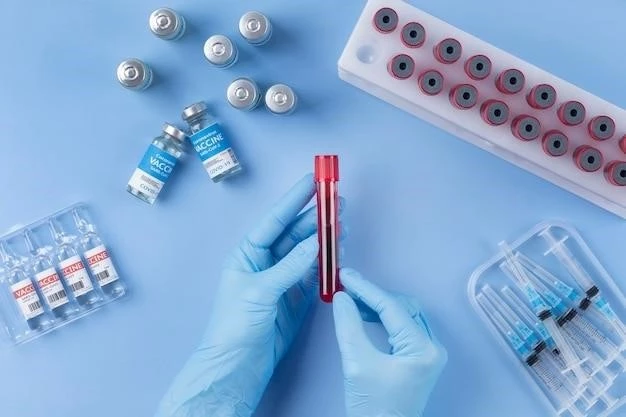Disease ౼ Hemophilia A
Welcome to our comprehensive guide on Hemophilia A! In this article, we will delve into the details of this disorder, including its symptoms, genetic basis, diagnosis, and treatment options. Stay tuned to learn all about the advancements in gene therapy for Hemophilia A.
Introduction to Hemophilia A
Hemophilia A is a genetic bleeding disorder caused by a deficiency in clotting factor VIII, a crucial protein for blood clotting. This disorder primarily affects males, as it is linked to the X chromosome. Individuals with Hemophilia A may experience prolonged bleeding episodes, both internally and externally, due to the inability of their blood to clot effectively.
Understanding Hemophilia A is essential for effective management and treatment. It is important to recognize the signs and symptoms of this disorder early on to prevent serious complications. Genetic counseling can also play a significant role in helping families understand the inheritance pattern of Hemophilia A and make informed decisions.
As we explore further into this article, you will gain insights into the genetic basis of Hemophilia A, the common symptoms associated with the disorder, diagnostic methods used to identify it, and the various treatment options available. Stay informed and empowered with the knowledge needed to navigate the challenges posed by Hemophilia A.
Understanding Bleeding Disorders
Having a comprehensive understanding of bleeding disorders, such as Hemophilia A, is crucial for managing the condition effectively. Bleeding disorders are characterized by the inability of blood to clot normally, leading to prolonged or excessive bleeding. Hemophilia A, specifically, is caused by a deficiency in clotting factor VIII, which disrupts the blood clotting process.
Individuals with bleeding disorders may experience symptoms such as easy bruising, prolonged bleeding from minor cuts or injuries, spontaneous bleeding into muscles and joints (hemarthrosis), and excessive bleeding following surgeries or dental procedures. It is essential to recognize these signs early on and seek medical attention for proper diagnosis and treatment.
Understanding the underlying mechanisms of blood clotting and the role of clotting factors in the process can provide valuable insights into the pathophysiology of bleeding disorders. Clotting factors are essential proteins in the blood that work together to form clots and stop bleeding. Any deficiency or mutation in these factors can disrupt the clotting process and lead to bleeding disorders like Hemophilia A.
By familiarizing yourself with the fundamentals of bleeding disorders, you can better appreciate the complexities of Hemophilia A and make informed decisions regarding treatment options and management strategies; Stay informed about the latest advancements in the field of hematology to ensure the best possible care for individuals with bleeding disorders.
Genetic Basis of Hemophilia A
Hemophilia A has a genetic origin, primarily affecting males due to its X-linked recessive inheritance pattern. The disorder is caused by mutations in the F8 gene, which provides instructions for making clotting factor VIII. A mutation in this gene leads to a deficiency or dysfunction of factor VIII, impairing the blood’s ability to clot effectively.
Understanding the genetic basis of Hemophilia A is essential for individuals and families affected by the disorder. Genetic testing can identify specific mutations in the F8 gene, helping in the diagnosis and management of the condition. It can also provide insights into the likelihood of passing the disorder to future generations.
It is important to note that females can also be carriers of the Hemophilia A gene, with a 50% chance of passing it on to their children. Genetic counseling plays a crucial role in educating families about the risks, inheritance patterns, and available options for prenatal diagnosis and family planning.
By recognizing the genetic underpinnings of Hemophilia A, individuals can make informed decisions about their healthcare, reproductive choices, and familial implications. Stay informed about the latest research on genetic therapies and advancements in the field of genetic engineering to explore novel treatment options for Hemophilia A.
Symptoms of Hemophilia A
Recognizing the symptoms of Hemophilia A is crucial for early diagnosis and prompt treatment of this bleeding disorder. Common symptoms of Hemophilia A include prolonged bleeding from minor cuts or injuries, easy bruising, nosebleeds that are difficult to stop, and bleeding gums. Individuals with Hemophilia A may also experience spontaneous bleeding into joints and muscles, a condition known as hemarthrosis.
Hemarthrosis, characterized by swelling, pain, and limited joint movement, is a hallmark symptom of Hemophilia A. If left untreated, recurrent bleeding into joints can lead to chronic joint damage and disability. Other symptoms to watch out for include blood in the urine or stool, excessive bleeding following surgery or dental procedures, and prolonged bleeding after vaccination.
It is essential for individuals with Hemophilia A to be vigilant about monitoring their symptoms and seek immediate medical attention if they experience unexplained or severe bleeding. Keep a log of bleeding episodes, their duration, and any factors that may have triggered them to provide valuable information to healthcare providers.
Educating yourself about the symptoms of Hemophilia A can help you take proactive steps to manage the disorder effectively. Stay informed about treatment options, lifestyle modifications, and preventive measures to minimize the risk of bleeding complications. Early intervention and proper management of symptoms can significantly improve the quality of life for individuals with Hemophilia A.
Diagnosis of Hemophilia A
Accurate and timely diagnosis of Hemophilia A is essential for initiating appropriate treatment and managing the disorder effectively. The diagnostic process typically involves a combination of clinical evaluations, laboratory tests, and genetic analysis. If you suspect you or a family member may have Hemophilia A, it is important to consult a healthcare provider with expertise in bleeding disorders.
During the diagnostic assessment, the healthcare provider will review your medical history, including any family history of bleeding disorders, and conduct a physical examination to assess for signs of Hemophilia A, such as joint abnormalities or unexplained bruising. Blood tests, including coagulation studies and specific factor assays, are often performed to measure clotting factor levels and confirm the diagnosis.
In some cases, genetic testing may be recommended to identify mutations in the F8 gene responsible for Hemophilia A. Genetic analysis can help determine the specific genetic defect causing the disorder and provide valuable information for treatment planning and genetic counseling. Understanding the genetic basis of Hemophilia A through diagnostic testing is crucial for personalized care and management.

Early diagnosis of Hemophilia A allows for the implementation of appropriate treatment strategies and preventive measures to reduce the risk of bleeding complications. By working closely with a specialized healthcare team experienced in managing bleeding disorders, individuals with Hemophilia A can receive comprehensive care tailored to their specific needs.
Clotting Process and Blood Proteins
Understanding the intricacies of the clotting process and the role of blood proteins is essential for comprehending the pathophysiology of Hemophilia A. The clotting process, also known as coagulation, is a complex cascade of reactions involving various clotting factors that work together to form a stable blood clot and stop bleeding.
Clotting factors are specialized proteins in the blood that play crucial roles in coagulation. Factor VIII, the deficient protein in Hemophilia A, is vital for the formation of a stable blood clot. In individuals with Hemophilia A, the lack or dysfunction of factor VIII impairs the clotting process, leading to prolonged bleeding episodes and increased susceptibility to hemorrhage.
Other key clotting factors, such as factor IX, factor VII, and von Willebrand factor, also contribute to the clotting cascade and help maintain hemostasis. Any disruptions or deficiencies in these clotting factors can result in bleeding disorders characterized by abnormal bleeding tendencies.
By gaining insights into the clotting process and the functions of blood proteins, individuals with Hemophilia A can appreciate the underlying mechanisms of their condition; It is important to work closely with healthcare providers specializing in hematology to develop personalized treatment plans that address the specific clotting factor deficiencies and mitigate the risk of bleeding complications.
Treatment Options for Hemophilia A
Managing Hemophilia A involves a multidisciplinary approach that focuses on controlling bleeding episodes, preventing complications, and improving quality of life. Treatment options for Hemophilia A typically revolve around replacing the deficient clotting factor VIII to restore proper blood clotting function and minimize bleeding tendencies.
One of the mainstay treatments for Hemophilia A is factor replacement therapy, where concentrates of factor VIII are infused intravenously to raise clotting factor levels in the blood; This approach helps individuals with Hemophilia A achieve hemostasis and manage bleeding episodes effectively. Regular prophylactic infusions can also be recommended to prevent spontaneous bleeding and joint damage.
In addition to factor replacement therapy, other treatment modalities for Hemophilia A include the use of desmopressin (DDAVP) to stimulate the release of von Willebrand factor, which can temporarily improve clotting function in some individuals. Depending on the severity of the condition, healthcare providers may recommend on-demand or prophylactic treatments to address bleeding events and prevent long-term joint complications.
Physical therapy and joint protection strategies are often incorporated into the treatment plan for individuals with Hemophilia A to maintain joint health, improve mobility, and reduce the risk of hemarthrosis. Education on self-management techniques, such as recognizing bleeding symptoms, administering factor infusions, and seeking prompt medical care, is crucial for empowering individuals with Hemophilia A to take control of their condition.
It is essential for individuals with Hemophilia A to work closely with a specialized hemophilia treatment center or healthcare team experienced in managing bleeding disorders. By staying informed about the latest advancements in treatment options, genetic therapies, and hemophilia research, individuals can make informed decisions about their care and well-being.
Advancements in Gene Therapy for Hemophilia A
Gene therapy offers promising possibilities for the treatment of Hemophilia A by targeting the genetic cause of the disorder. Advances in gene therapy research have paved the way for innovative approaches to address the underlying mutation in the F8 gene responsible for Hemophilia A. Gene therapy aims to introduce functional copies of the F8 gene into the body to restore normal clotting factor VIII production.
Recent developments in gene therapy techniques, such as adeno-associated viral vectors and gene editing tools like CRISPR-Cas9, have shown tremendous potential in correcting F8 gene mutations and improving clotting factor levels in individuals with Hemophilia A. These cutting-edge technologies hold great promise for offering a more permanent and sustainable treatment solution for the disorder.
Clinical trials investigating gene therapy for Hemophilia A have demonstrated encouraging results, with some participants achieving sustained factor VIII production and reduced bleeding episodes following treatment. While gene therapy for Hemophilia A is still undergoing rigorous testing and refinement, it represents a groundbreaking approach that may revolutionize the management of genetic bleeding disorders in the future.
As research in gene therapy continues to progress, individuals with Hemophilia A are encouraged to stay informed about the latest advancements in the field. Discussing the potential benefits and risks of gene therapy with healthcare providers specializing in bleeding disorders can help individuals make informed decisions regarding their treatment options and participation in clinical trials.
